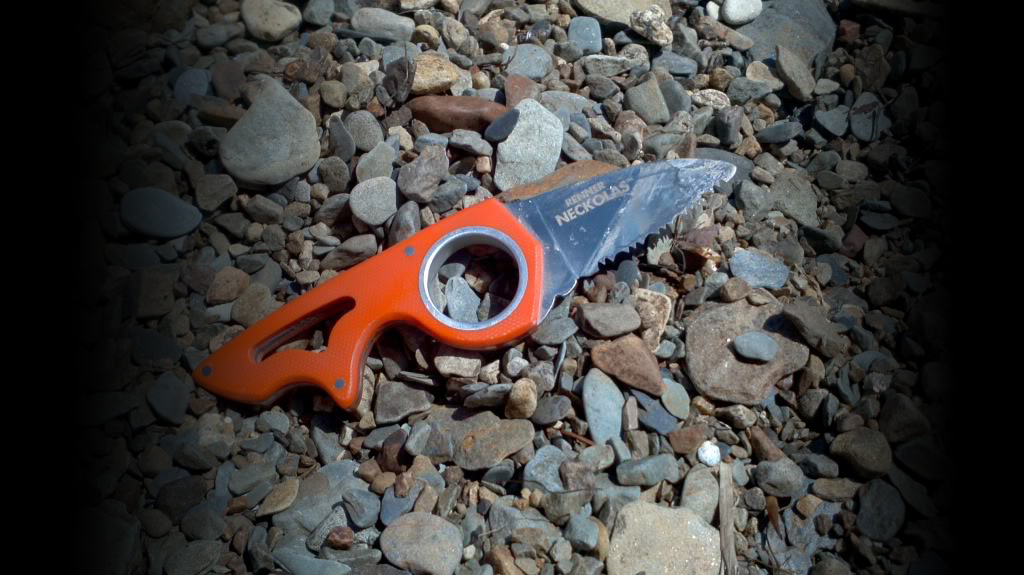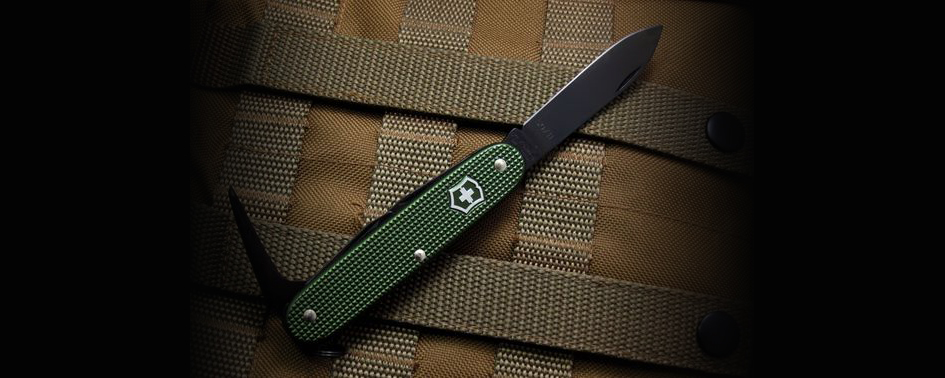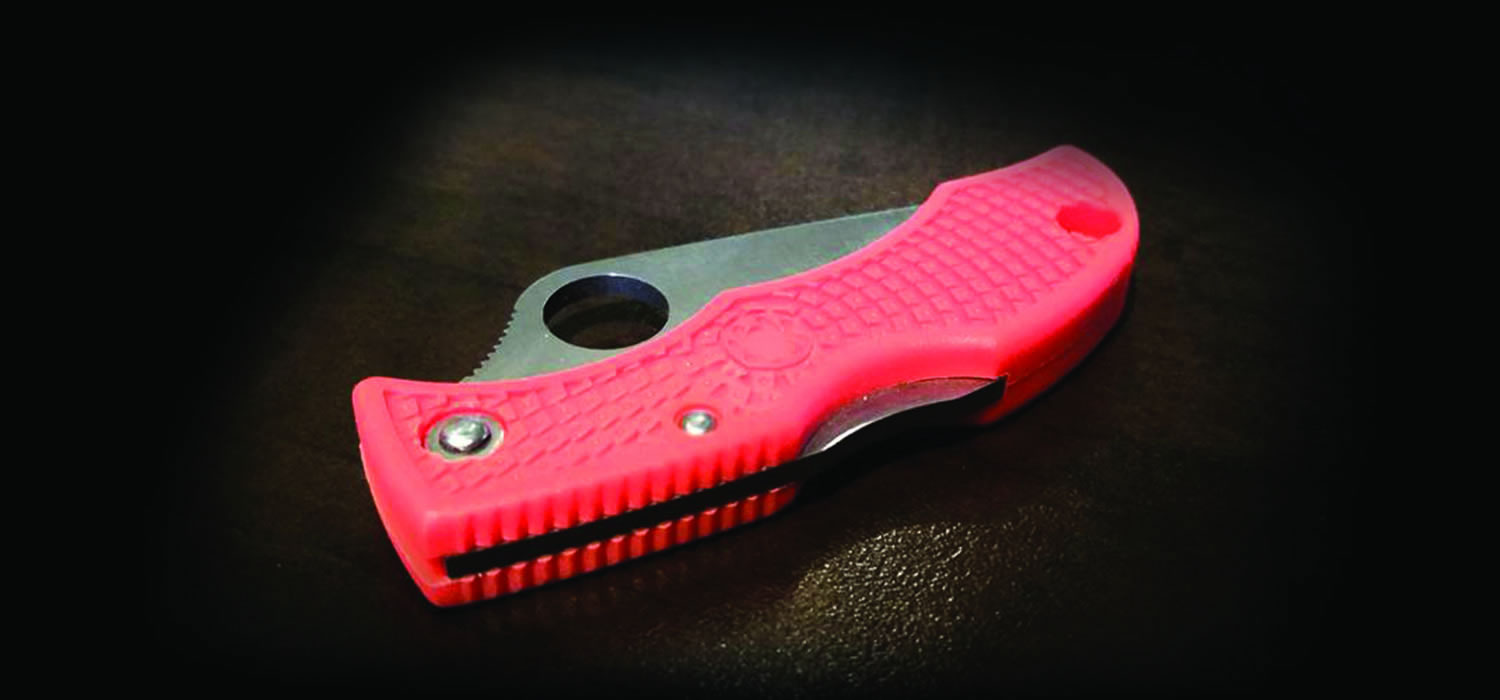- You are here:
-
Home

-
Knife Reviews

- Kizer
As someone who’s been deep into knives and EDC gear for a long time, I’ve seen plenty of trends come and go. New steels show up, lock mechanisms rise and fall in popularity, and every year it feels like a few dozen new brands try to carve out a space. Some of them fade fast. Others catch your attention and make you want to take a closer look. That’s what happened when I came across Tacray.
They weren’t a brand I knew much about, but what I did know was that they had a background in precision machining and titanium work. That alone was enough to raise an eyebrow. I’ve always been drawn to designs that feel intentional and different, and the Tiran immediately had that presence. Something about the way it looked—sharp lines, thin frame, reverse tanto profile—told me it wasn’t just another recycled design.
This was my first time handling a Tacray knife, and I didn’t know what to expect. But after spending time with the Tiran, I found myself coming back to it again and again. There’s a lot going on under the surface, so let’s break it down.

When a knife pulls from history, there’s always a risk: does it honor its roots or just ride the coattails of a classic? With the Naga, Vosteed manages to do both. It respects the past while pushing the design into modern EDC territory. Inspired by the traditional Spanish Navaja, the Naga takes those signature curves and blade lines and gives them a refined, high-performance twist.
Right out of the box, the influence is obvious. The profile screams Navaja with its elongated blade, prominent handle hook, and a sweeping belly. But everything about it feels modern and intentional. It’s kind of like if the Cold Steel Espada went to finishing school. That hook at the rear of the handle isn’t just aesthetic. It locks your hand in. And that slight palm swell? It adds an extra layer of comfort and control. You’re not going anywhere once you grip this knife.

I had the pleasure of visiting the Vosteed booth at Blade Show this year and got to see a bunch of cool new stuff and prototypes. One knife that really caught my attention was the Corgi sporting the new Vanchor Lock. That lock first showed up on the Ankylo and has since made its way into more of Vosteed’s lineup. We already checked out a mini version of the Corgi that had it, and while it was fun, fidget-friendly, and pretty incredible all around, it just wasn’t for me. It felt more like a fifth pocket knife, and I prefer something that fills the hand.

Ever met a Yipper? Not the knife—I'm talking about that scrappy little dog that sounds like it runs the neighborhood but weighs less than a fast-food combo meal. The kind that barks like it’s got something to prove. That’s the vibe behind the MKM Yipper. It’s a compact everyday carry that barks loud with bold design choices but remains approachable and easy to carry. Designed by Ben Peterson and produced in Maniago by MKM (Maniago Knife Makers), the Yipper blends Italian precision with a no-nonsense attitude.

I’ve gone through my fair share of sharpening gear over the years. Fixed-angle systems, ceramic rods, guided kits, whetstones—you name it. I’ve gotten to the point where I’m confident sharpening just about anything. So when Work Sharp sent over both the MK2 and the Ken Onion Edition for review, I was curious. I’d never used a powered belt system before, and honestly, I was skeptical. But after spending time with both models, I’ve got to hand it to them—these things are impressive.
They’re nothing like the sharpening systems I’ve grown up with, and they aren’t trying to be. Instead of aiming for slow precision, these tools are all about speed, efficiency, and repeatability. If you’re expecting them to feel like stones or guided systems, you’re going to have to rewire your thinking. But once you do, they’ll surprise you in a good way.

Published in
Sharpening Systems
Tagged under
Those who read my reviews know I’m not loyal to just one style of knife. I appreciate everything from thin, lightweight slicers to thick, heavy-duty workhorses. One knife that’s been on my radar for a while is the Benchmade Freek—or as it’s affectionately known in the community, the “Super Freek.” Yes, I know. That song is stuck in your head now. Mine too. You’re not alone.
I’d been wanting to check it out for a while, mostly because of the glowing reviews and surprise praise it’s received. It’s become the go-to for folks looking for a tough, capable EDC knife. In fact, I think the Freek is a better version of the famous Griptilian. Let’s get down to brass tacks and talk about what makes this one super.

Here in the South, folks say they can smell rain coming. That earthy, charged scent is called petrichor—caused by ozone, plant oils, and soil bacteria getting kicked up just before the skies open. I’ve lived here long enough that you’d think I’d have picked up that trick, but maybe being only half Southern is to blame. I didn’t catch the storm building on the horizon this time either—Kansept’s Thunderhead blew in fast, and it hit hard.

Published in
Knives
Tagged under
I usually gravitate toward slimmer, more slicey knives—something that feels light in the pocket and glides through material with ease. Big, overbuilt folders typically aren’t my thing. But something about the Caveman caught my eye. Maybe it was the Fat Carbon scales. Maybe it was the unapologetically bold design. Either way, I knew I had to give it a shot. Designed by Jesse Pauley in his first venture into production knives, the Caveman strikes a surprising balance between brute strength and thoughtful design and I’m glad I gave it a chance.

When you’re looking for a quality utility blade—something for work, or just those moments when you don’t want to gunk up your favorite EDC knife—there’s a lot out there. You’ve got everything from budget bin beaters to high-end options like the Hawk Shortcut. I usually recommend starting somewhere in the middle. Something built well, compact enough to disappear in the pocket, and tough enough to handle daily demands. That’s exactly where the OKnife U1 Ultra lands. It checks all the boxes, and after spending time with it, I can confidently say it’s a contender.

Some knives are made to disappear into the pocket. The Feweed clearly didn’t get that memo. Designed by Vũ Huỳnh Nam Anh as part of Kizer’s design contest, the Feweed makes an immediate impression. Between the bold carbon inlays, harpoon-style blade, and dramatic lines, it’s anything but subtle. But beneath all that flair is a surprisingly well-thought-out EDC folder that’s more than just eye candy.

More...
Some knives are designed to blend in. The Civivi Elementum II, especially this Damascus and golden shred variant, isn’t one of them. While it shares its name and silhouette with the original Elementum, this model feels like the dressier, more charismatic sibling. It's polished, confident, and packing a little extra swagger. But beneath the showy looks, Civivi’s familiar fit and finish and EDC practicality still shine through.

Ergonomics & Handle Materials
The shredded carbon fiber with golden shred is a showstopper. It’s encased in clear resin that gives it a glossy, high end finish, almost like a custom knife you'd expect to find behind glass at a boutique show. Despite its flashy looks, the handle offers a surprisingly comfortable grip.
At 0.51" thick, it fills the hand just enough without feeling bulky, and the smooth finish doesn’t create any hot spots during light use. You won’t get much traction if your hands are wet or gloved, but for EDC and fidget tasks, it feels great.
Inside, you’ll find stainless steel liners that provide structural integrity without adding too much weight. The total weight comes in at 2.86 oz, which makes this a very pocketable piece.
No texture? No problem. This one leans more gentleman than hard use, and I think that’s perfectly fine for what it’s trying to be.

Locking Mechanism & Clip
The button lock is the star of the show here, and Civivi tuned it beautifully. There’s a spring under the button that provides just the right amount of tension. It’s enough to avoid accidental deployment in the pocket but still light enough to make closing the knife with one hand a breeze.
It’s paired with caged ceramic ball bearings that give the knife that signature buttery deployment. Whether you’re flicking it open with the flipper or closing it with a press of the button, the Elementum II feels dialed in. The action is smooth, the lockup is solid, and there’s no blade play in any direction.
As for the pocket clip, it’s a simple stainless steel design, tip up and right hand only. It rides fairly deep and doesn’t draw attention, but I would’ve liked to see some accommodation for left-handed users, especially given how versatile this knife is otherwise. The clip holds tight, though I wouldn’t call it exceptionally strong or robust. It does its job, and that’s about it.

Blade & Performance
The 2.96" Damascus drop point blade offers a nice balance between form and function. Let’s be honest, most people are buying this version of the Elementum for the looks, and Civivi delivers with a blade that’s visually striking. The hollow grind is well executed, and the edge came razor sharp right out of the box.
In use, the blade handles daily tasks with ease. Opening packages, slicing fruit, breaking down cardboard—the 0.12" blade stock tapers to a fine cutting edge that excels at precise, controlled cuts.
Now let’s talk steel. Damascus looks amazing, but it's generally a compromise between performance and visual appeal. Civivi doesn’t specify the exact composition here, but the 58 to 60 HRC rating lines up with mid tier edge retention. You’ll likely find yourself sharpening it more often than a premium stainless, but it takes a fine edge quickly and isn’t difficult to maintain if you’re used to sharpening your own blades.
Bottom line: it’s a slicer, not a beater.

Final Thoughts
The Civivi Elementum II in Damascus and golden shred is a style forward version of a knife that already had a great reputation. It doesn’t pretend to be a heavy duty workhorse, and it doesn’t need to. Instead, it offers classy materials, premium action, and reliable EDC performance in a package that’s a joy to use and even more fun to show off.
Is It Worth It?
If you’re in the market for a button lock knife that feels more high end than its price tag suggests, and you want something that’s as much art piece as tool, this model delivers.
It’s not perfect. Lefties may feel left out, and you’ll want to be mindful of the resin handle in rough conditions. But at around $90, it offers a ton of value, especially considering the fit, finish, and fidget factor.
Humans have always been creators. It’s part of our DNA—this drive to innovate, to build, and to leave behind something that reflects our ideas and ingenuity. Nowhere is that spirit more alive than in the EDC community. From knives and pry bars to custom hanks and pocket organizers, this space is overflowing with talented individuals whose creativity never stops. Most of the time, we see clever twists on familiar designs. But every so often, something genuinely original comes along.
That’s exactly what happened when I stumbled across a TikTok video from Stephen at SPRTungsten. What caught my eye wasn’t just the sleek look of the tool—it was what it was made of, and what it could do. Crafted entirely from Tungsten Cobalt, it looked unlike anything I’d seen before. I was intrigued. My curiosity got the better of me, so I reached out.

Published in
Gear
Tagged under
Some lights are built like tactical tanks, others like elegant torches — and then there’s the Nitecore TINI 3. This tiny keychain flashlight looks like it belongs on a novelty USB stick, yet it kicks out up to 600 lumens, offers multiple color temperatures, and even has an OLED screen. It’s a pocket-sized nerd dream come true — and possibly the most overqualified thing you’ve ever hung on a keyring.

Published in
Flashlights
When early European settlers first laid eyes on the massive, shaggy creatures roaming the plains of North America, they dubbed them buffalo — a name that stuck, even though these animals weren’t true buffalo at all. Technically, they’re bison — American bison, to be precise. But try telling that to the folks who named Buffalo, New York. Or the ones who minted the Buffalo nickel. Or me, when I still forget and call them buffalo out of habit.
The American bison has become a symbol of resilience, strength, and the wild spirit of the frontier. They were once hunted to near extinction, but conservation efforts brought them back from the brink. Today, they stand as one of the great icons of North America — a reminder of the untamed wild and the sheer muscle that once shook the prairie.

Interested in this or a different tool and still have more questions?
Why not join us over on the Multitool.org Forum where our community can help you find what you're looking for!
Join the discussion now!
Why not join us over on the Multitool.org Forum where our community can help you find what you're looking for!
Join the discussion now!
What kind of people would write collect and review multitools? Quite simple really- we are designers and do-ers, outdoors types and indoor types, mechanics, doctors, problem solvers and problem makers. As such, we have, as a world spanning community, put every type, size and version of multitool, multifunction knife, pocket knife and all related products to every test we could manage in as many places and environments as there are.



